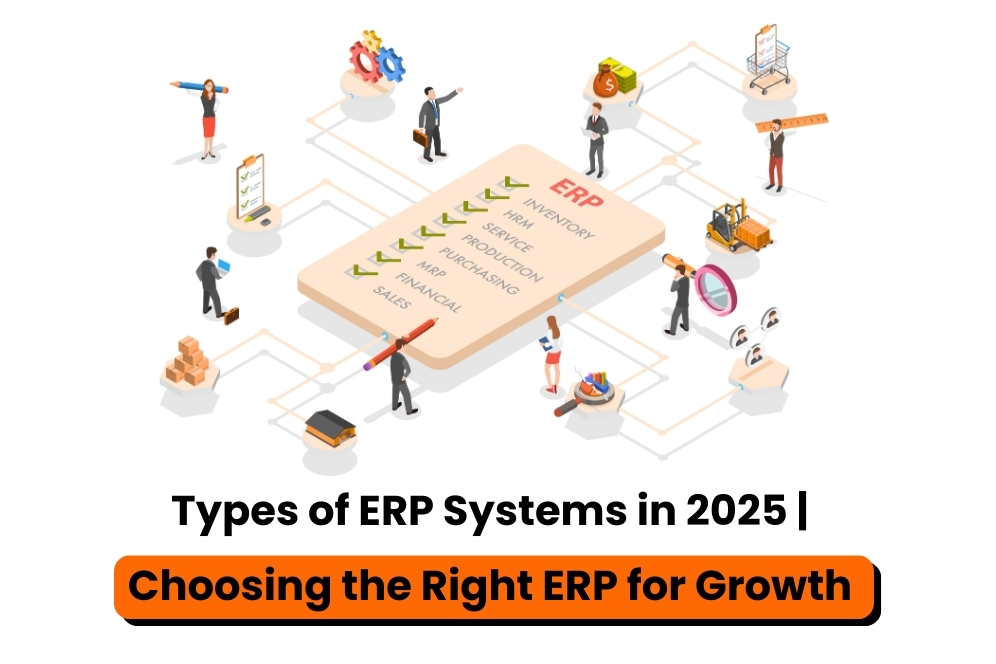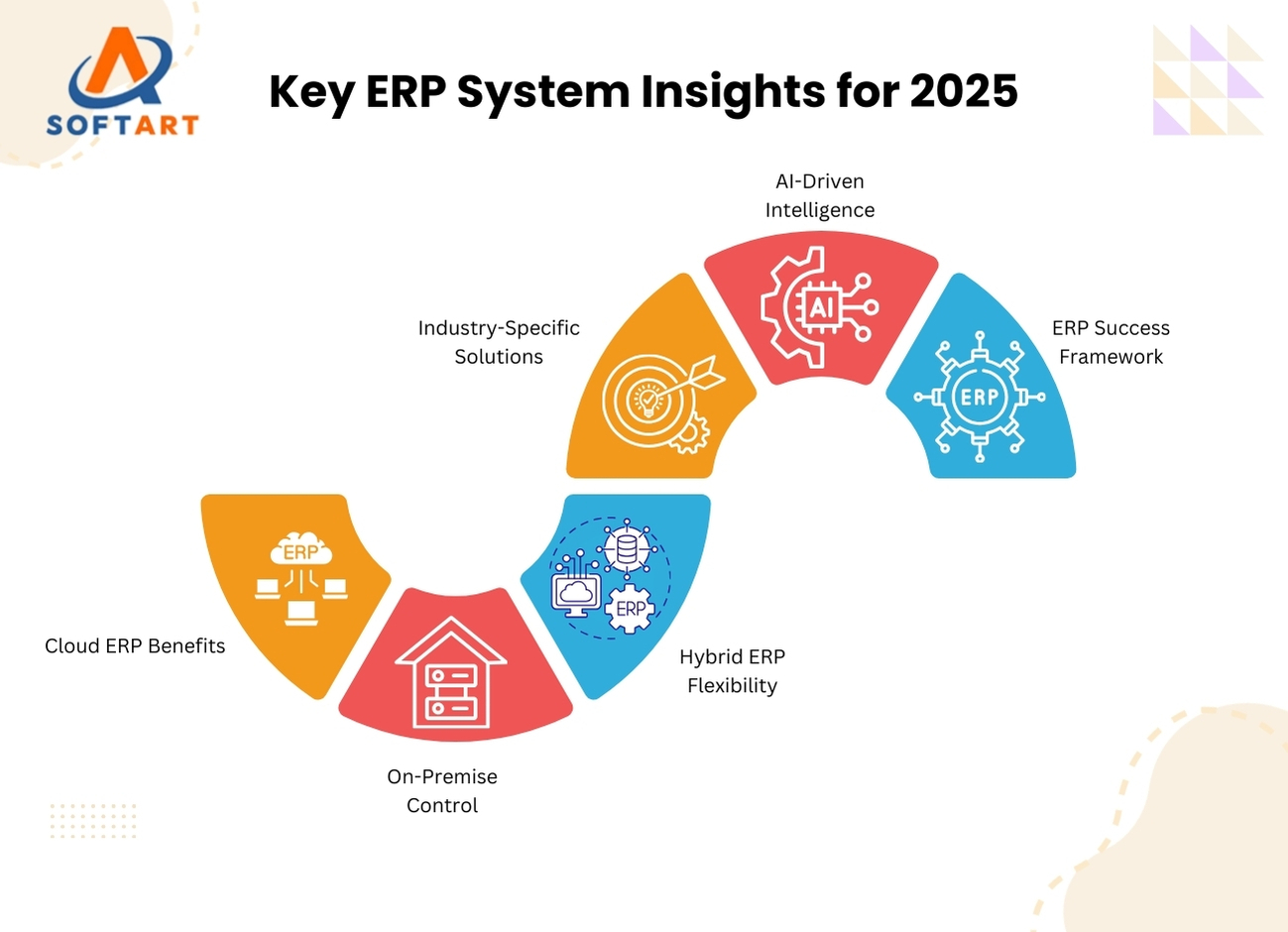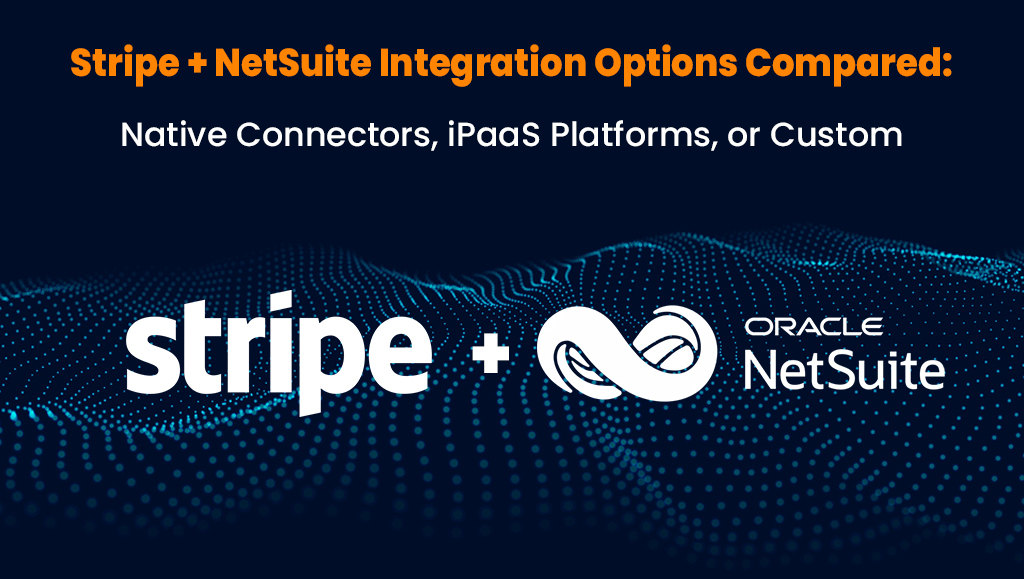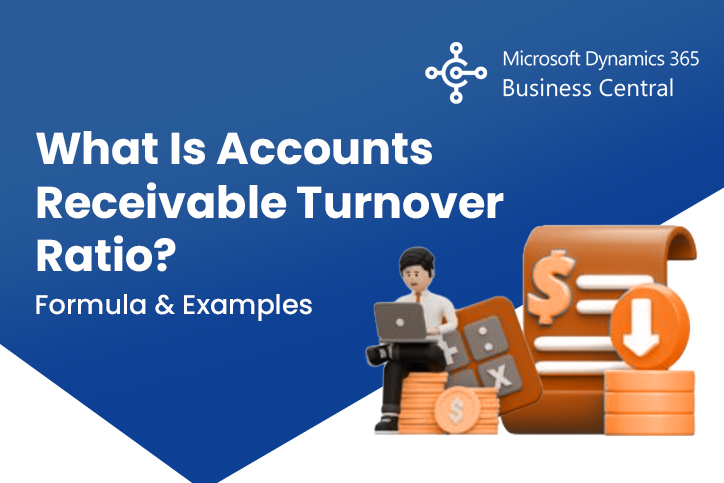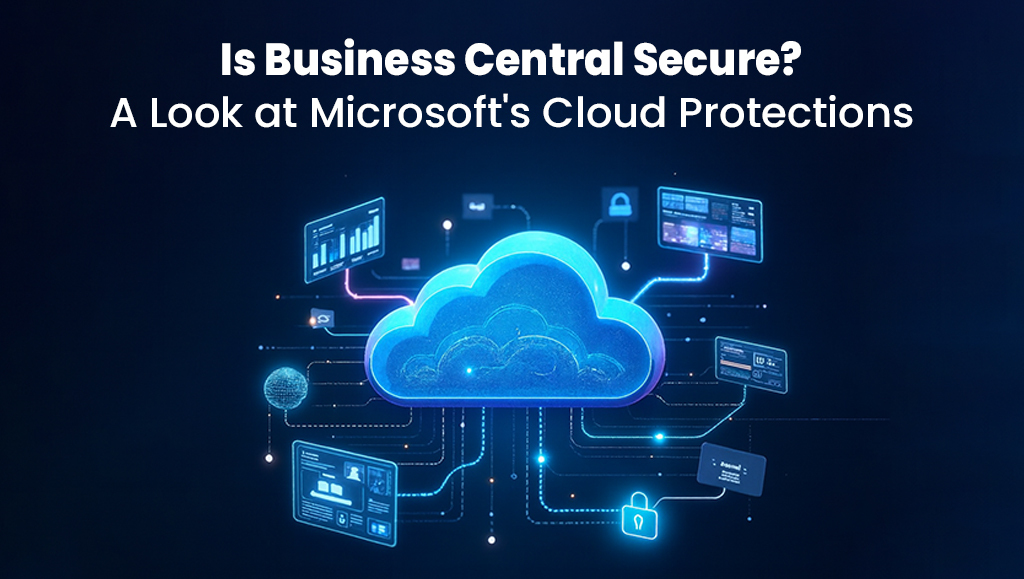Businesses running on outdated systems often face bottlenecks that slow growth. Manual reporting, disconnected applications and lack of real-time insights create silos that hinder agility. Even worse, companies that pick the wrong ERP solution face heavy costs: failed implementations can lead to 20–30% budget overruns and stalled digital transformation efforts.
When the right ERP system is chosen and properly implemented, however, businesses gain:
- Seamless integration of finance, operations, HR and supply chain.
- Real-time data visibility for accurate forecasting and decisions.
- Reduced operating costs through automation and streamlined workflows.
- Stronger compliance and governance for regulated industries.
- Flexibility to scale globally as the business expands.
In short, your ERP decision will either fuel growth or hold it back.
In this blog, we’ll break down the types of ERP systems in 2025 , analyze their strengths and give you a proven decision framework to help you choose the right one. By the end, you’ll have the clarity to move forward with confidence and avoid common ERP selection pitfalls.
Exploring the Different Types of ERP Systems in 2025
ERP systems in 2025 fall into five primary categories. Each offers unique benefits and fits different organizational needs.
1. Cloud ERP
Cloud ERP has become the go-to model for most mid-to-large enterprises. Delivered through vendor-hosted servers, it removes the need for heavy in-house IT infrastructure.
Key Benefits:
- Lower upfront investment and predictable subscription pricing.
- Faster deployment and automatic updates.
- Strong cybersecurity and data compliance protocols.
- Mobility, employees can access ERP from anywhere.
Use Case Example:
A retail chain expanding into multiple geographies can deploy Cloud ERP to unify inventory, supply chain and finance across all stores. Instead of building expensive on-premise systems in each country, cloud ensures real-time synchronization and easy scalability.
2. On-Premise ERP
On-premise ERP may no longer dominate, but it remains essential for certain industries. Installed locally on company servers, it provides maximum control.
Key Benefits:
- Tailored customization to unique processes.
- Complete ownership of sensitive data.
- Ability to function without reliance on external cloud providers.
Use Case Example:
A defense contractor handling classified information may opt for on-premise ERP to meet strict data security regulations. While costlier, the control ensures compliance with government standards.
3. Hybrid ERP
Hybrid ERP bridges traditional systems with modern cloud solutions. It’s especially popular among companies transitioning from legacy platforms.
Key Benefits:
- Flexibility to modernize gradually without disrupting operations.
- Critical functions (e.g., finance) can stay on-premise, while non-critical ones (e.g., HR) move to cloud.
- Smooth learning curve for employees adapting to new systems.
Use Case Example:
A large manufacturing company with complex plant operations may retain its on-premise modules while adopting cloud ERP for sales and customer service is striking a balance between modernization and stability.
4. Industry-Specific ERP
Industry-focused ERP systems are gaining momentum in 2025. Preconfigured templates reduce implementation complexity and align directly with business workflows.
Key Benefits:
- Out-of-the-box compliance with industry regulations.
- Reduced customization costs and faster rollouts.
- Modules designed for niche processes like healthcare billing, retail POS or automotive supply chains.
Use Case Example:
A hospital system adopting healthcare-specific ERP gains built-in modules for patient management, regulatory compliance and billing without requiring extensive customization.
5. AI-Enabled ERP
The most disruptive ERP category in 2025 is AI-powered ERP. These systems leverage machine learning, predictive analytics and natural language processing.
Key Benefits:
- Predictive demand forecasting and anomaly detection.
- Automated workflows reduce manual intervention.
- Intelligent recommendations for cost savings and risk mitigation.
- Conversational AI assistants for employee queries.
Use Case Example:
An e-commerce company can use AI-enabled ERP to forecast seasonal demand to automatically adjust supply chain orders and optimize warehouse operations preventing stockouts or overstocking.
The ERP Success Framework: 5 Steps to Choosing the Right System
To avoid costly mistakes businesses should follow a systematic ERP selection process. Here’s a proven framework:
1. Define Business Objectives.
Clarify if the priority is reducing costs and enabling global expansion or achieving regulatory compliance. Objectives will drive ERP selection.
2. Map Current Processes.
Audit your existing workflows. Identify bottlenecks like manual reconciliations or duplicate data entries. This highlights the must-have ERP features.
3. Evaluate ERP Types.
Compare how cloud, hybrid, on-premise or AI-driven systems align with your objectives. Always match ERP type with business strategy not market hype.
4. Engage Expert Partners.
Engaging oracle cloud erp consulting firms ensures you leverage proven methodologies. Consultants bring implementation expertise, vendor relationships and risk mitigation strategies.
5. Plan Change Management.
Even the best ERP will fail if employees resist adoption. Invest in training, communication and phased rollouts to build acceptance.
Common Pitfalls to Avoid in ERP Selection
ERP failures often stem from decision-making missteps rather than technology flaws. Here are pitfalls to steer clear of:
- Prioritizing cost over value. Low-cost systems may fail to scale.
- Ignoring integration needs. Disconnected apps lead to silos.
- Over-customizing. Heavy custom work complicates upgrades.
- Skipping user training. Lack of adoption undermines ROI.
- Underestimating timelines. Rushed rollouts often trigger disruptions.
ERP Systems Compared: Quick Snapshot for Decision-Makers
This at-a-glance comparison table simplifies how each ERP type stacks up.
| ERP Type | Cost Range | Scalability | Customization | Best For |
|---|---|---|---|---|
| Cloud ERP | $20,000 – $100,000 per year | High | Medium | Global, fast-growing enterprises |
| On-Premise ERP | $100,000 – $500,000+ (one-time setup) | Low | High | Regulated, security-sensitive industries |
| Hybrid ERP | $50,000 – $250,000 per year | Medium-High | Medium-High | Businesses transitioning to cloud |
| Industry-Specific | $30,000 – $200,000 per year | Medium | Medium | Healthcare, retail, manufacturing |
| AI-Enabled ERP | $40,000 – $300,000 per year | Very High | Medium | Data-driven and innovation-focused firms |
Key Takeaways for Leaders Choosing ERP in 2025
Actionable insights you can use immediately when evaluating ERP vendors and partners.
- Focus on strategy alignment not trends. Choose ERP that fits your business vision.
- Involve key stakeholders early. Cross-department buy-in improves adoption.
- Prioritize scalability and integration. Avoid short-term thinking.
- Evaluate vendors’ innovation roadmaps. Ensure your ERP evolves with market needs.
- Partner with oracle erp cloud implementation experts. This reduces risks and accelerates ROI.
ERP ROI in 2025: What Businesses Can Expect
ERP is not just a cost it is a growth enabler. Companies that implement the right ERP in 2025 report:
- 20–30% improvement in operational efficiency.
- Faster decision-making cycles with real-time analytics.
- Cost savings of up to 25% through process automation.
- Improved customer experience with integrated CRM and ERP workflows.
The investment pays for itself through productivity gains and reduced errors and better scalability.
Book Your Free ERP Consultation Today!
Choosing the right ERP system in 2025 is about finding the best fit for your business strategy, not just the latest technology. Whether you need the flexibility of cloud, the security of on-premise or the innovation of AI-driven ERP and making the right decision will set the foundation for long-term growth.
Ready to simplify your ERP journey and maximize ROI? Book a free consultation with SoftArt Solutions today and take the first step toward ERP success.




